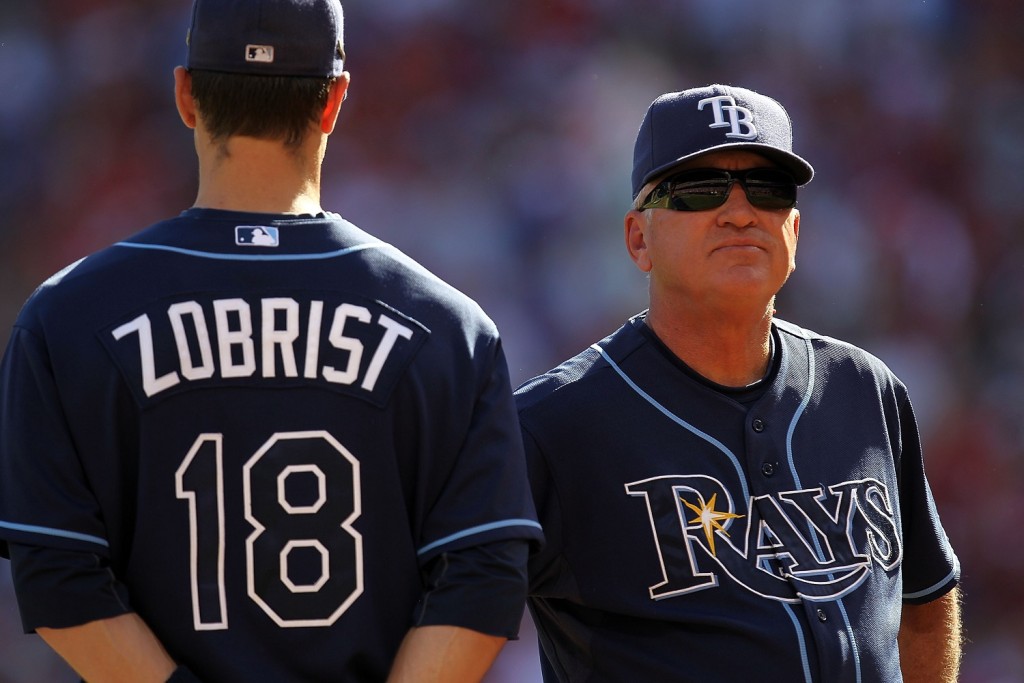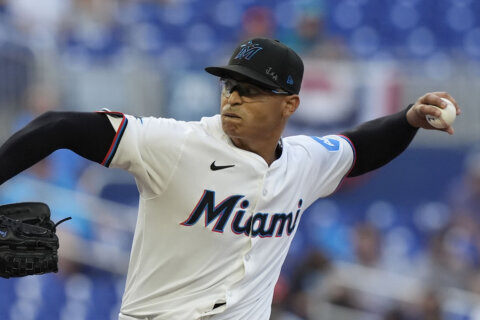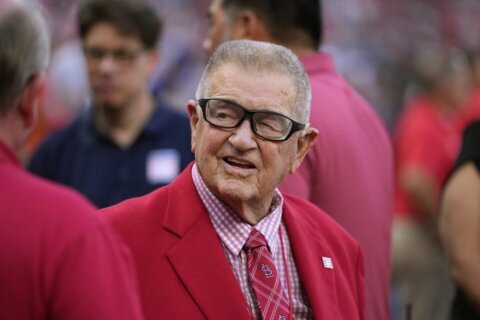WASHINGTON — Multiple reports surfaced Tuesday night that free agent Ben Zobrist spurned more lucrative offers, possibly from the New York Mets and Washington Nationals, to sign a four-year, $56 million contract with the Chicago Cubs. Perhaps the most interesting aspect of the highly publicized pursuit of Zobrist this offseason was that there was so much fuss at all for a 34-year-old utility player.
There are bigger free agents still out there, players younger and stronger and faster than Zobrist — he has eclipsed 20 home runs just once; stolen 20 bases just once; never hit .300 — who will get more guaranteed years and money than him. But Zobrist is worth the deal he scored, and possibly more.
The reason teams made so much fuss about him is that there isn’t anyone else quite like him in the sport.
Zobrist is a switch-hitter, slightly stronger against lefties, with low strikeout numbers and a strong on-base percentage from both sides of the plate throughout his career. But his true value lies in his ability to play nearly anywhere on the diamond. He came up as a shortstop, but has played every spot on the field other than pitcher and catcher in his 10-year Major League career.
He had even fewer limitations when Rusty Pendergrass saw him in college.
“On the mound, he was 90-plus,” recalls Pendergrass. “He could catch.”
Pendergrass was a scout with the Houston Astros at the time. He recommended Zobrist, then a senior at Dallas Baptist University, and the club selected him with their sixth-round pick in the 2004 First-year Player Draft. Along with Hunter Pence, he’s arguably the most successful big leaguer Pendergrass, now scouting for the Arizona Diamondbacks, has signed.
As a senior, Zobrist batted a team-high .378 with a .448 on-base percentage, also best on the club. He slugged .590 and drove in 66, both team highs. He was caught just once in 23 stolen base attempts and walked (29 times) nearly as much as he struck out (31). The starting shortstop, he was in the lineup for all 60 games.
“He was a very athletic player, switch-hitter, fast, good arm, could hit,” says Pendergrass, rattling his way through the check boxes on an evaluation form. “His actions were plus … He has plus makeup … You look at some players and they’re just winners.”
Zobrist was traded to Tampa Bay in 2006 and rose quickly through the minors, but took a couple years at the big league level to find success, struggling as a full-time shortstop. But in 2009, he took the leap forward, slashing .297/.405/.543 and making his first All-Star team while playing seven different positions throughout the season. He had found a niche, and the Rays had found a player that allowed them the versatility to match against pitching staffs with evermore specialized roles.
“It’s a tremendous tool to be able to have a guy who can play several positions, but also doesn’t have to come out of the lineup (for a pinch-hitter),” explains Pendergrass of Zobrist’s adaptability.
***

The Oakland A’s were one of the first teams to begin re-exploring the idea of platooning players as a means to successful, fluid lineup construction after the concept had gone out of vogue the past couple decades. They even employed a “three catcher lineup” a couple years ago, with John Jaso, Stephen Vogt and Derek Norris, all natural catchers, sometimes playing at the same time, with one at DH and another in the outfield.
“I’ve always valued those kinds of guys, even back to when the A’s had Tony Phillips,” says A’s radio play-by-play man Ken Korach, referring to the 18-year Major League veteran who reached base at a .374 in his career, and who played every position on the field outside of pitcher and catcher for the 1988 Athletics.
“People used to compare players and say ‘He’s a Tony Phillips type of player.’ Now they say, ‘He’s a Ben Zobrist kind of player.’”
So Zobrist made perfect sense as an acquisition when the A’s brought him to Oakland before last season. Korach had seen Zobrist play in the American League his entire career, but got a closer view last year of why he was so highly valued.
“I was always really impressed those years in Tampa Bay,” Korach recalls. “The A’s have always valued versatility, and he was kind of the poster child for that. But he’s also a really solid guy to have on a club.”
The A’s got off to a horrific start and ended up sellers at the trade deadline. With Zobrist headed to free agency in the offseason, he made a valuable addition for a contender, and went on to help Kansas City to a World Series title, slashing .303/.365/.515 with 10 extra-base hits in the Royals’ postseason run.
That left him a target of many clubs this offseason, with the Nats, Mets, San Francisco Giants and Los Angeles Dodgers all linked strongly as teams vying for his services. But something Korach said could have tipped one off to the potential mystery team lurking in the reeds.
“I knew Joe Maddon was always very high on him.”
The former Tampa Bay manager will be reunited with Zobrist once more in Chicago.
***

Perhaps the biggest single statistic that supports Zobrist’s value is Wins Above Replacement (WAR). Between 2009 and 2014, Zobrist was worth between 4.6 and 8.7 WAR per season, according to Baseball Reference. His 37.5 WAR total during that six-year period was the third highest in baseball, trailing only Miguel Cabrera (38.5) and Robinson Cano (40.8); better than Adrian Beltre (36.7) and Dustin Pedroia (33.0) and Albert Pujols (32.7).
In 2010, Zobrist signed a three-year extension with a pair of team option years, worth a total of $30 million. It would turn out to be one of the most team-friendly contracts in the sport. And it’s why now, even at age 34, he will nearly triple his career earnings so far ($30.8 million) when he signs his name on the dotted line in Chicago.
But are there more Ben Zobrists out there? Could there be a market for adaptable, versatile utilitymen the same way there is for one or two-dimensional players like Chris Davis, who essentially hits only for power?
“Well, we’re always looking for athletes with tools that can make it in the big leagues,” says Pendergrass. “But on the amateur side, we’re trying to predict if an 18 to 21-year-old can play in the big leagues. Very seldom can you project a guy that can play anywhere on the field.”
Beyond just the sheer ability is the willingness to do so. Pendergrass, like Korach, also speaks to Zobrist’s character. Baseball is the most individual of the team sports, but for Zobrist to be at his most valuable has often meant moving around to accommodate to the situation. That takes a selflessness not every player possesses, and it’s that part of Zobrist that makes Pendergrass the proudest for having to have his name next to him in the annals of the baseball record books.
And it’s why so many teams wanted him this winter.
“I’d love to find another Ben Zobrist,” says Pendergrass. “But they just don’t come around that often.”







